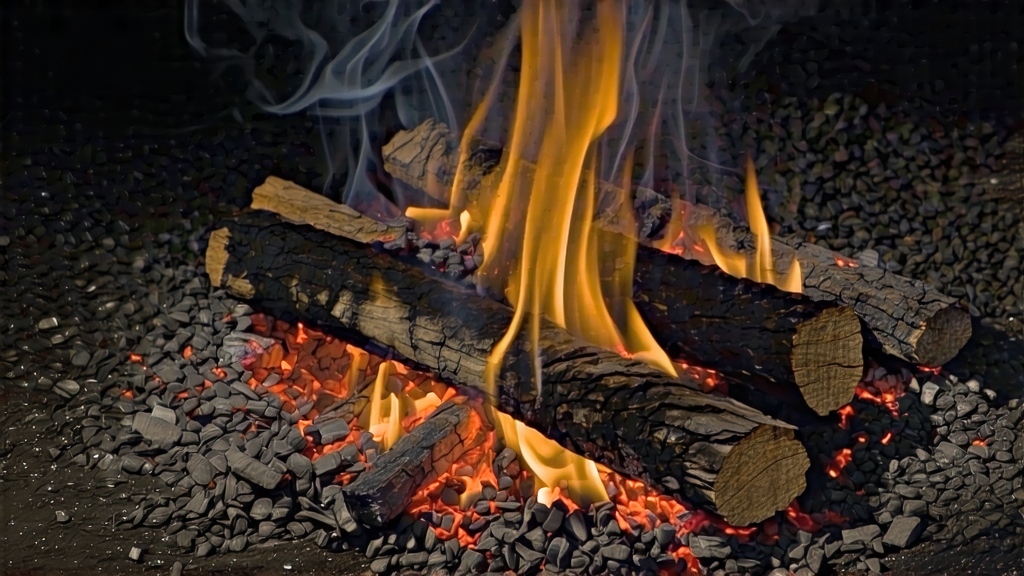
Ask most tea lovers to name the first black tea ever created and they will probably shrug; mention Lapsang Souchong, however, and eyes widen at the memory of its unmistakable campfire aroma. Hailing from the granite gorges of the Wuyi massif in China’s north-west Fujian, this “Zheng Shan Xiao Zhong” is not merely a curiosity—it is the primogenitor of every black tea on earth, the leaf that taught the world how to oxidise. What follows is a 2,000-word journey through its turbulent history, microscopic leaf grades, pine-driven craft, and the quiet gongfu ritual that turns smoke into velvet in the cup.
-
A leaf born from chaos
The year 1646 is etched into local memory: Qing troops poured into the Wuyi highlands, forcing Ming loyalist soldiers and monks to hide in tea factories overnight. Fresh green leaves, plucked for the usual wulong, withered beyond rescue; in desperation the workers racked them over smouldering pine to dry quickly before the enemy returned. The next morning the leaves had turned obsidian, exuding a scent of resin and treacle. Dutch traders in Xiamen tasted the accidental batch, paid double, and shipped it to Amsterdam as “bohea” (a corruption of “Wuyi”). Europe’s first black tea had arrived, and by 1669 the British East India Company was listing “Lapsang” at auction in London. The name itself is a Cantonese sailors’ tag—“laap saang” literally “pine wood fragrance”—that stuck in the West while the Chinese kept the humbler “Zheng Shan Xiao Zhong,” meaning “original-mountain small-leaf variety.” -
Terroir: cliffs, mist, and river air
Authentic Lapsang grows between 600 m and 1,200 m inside the 60-km core zone of the Wuyi National Nature Reserve. Granite crags store daytime heat and release it at night; the Chong’an River funnels cool, moisture-laden air through narrow gorges, creating a 70 % relative humidity that elongates the growing season. The soil is a stony, slightly acidic regolith poor in nitrogen but rich in potassium and magnesium—stress that concentrates aromatic amino acids in the tender two-leaf-and-a-bud pluck. Locals insist that the same cultivar transplanted even 20 km downhill loses its innate lychee-sweet note and cannot withstand the final pine-smoking stage without turning harsh. -
Cultivars: beyond the “small leaf”
Although the original population consists of seed-propagated Xiao Zhong bushes, clonal selections have emerged since the 1960s:- Wuyi #1 (early budding, high catechin, suited for premium unsmoked grades)
- Wuyi #2 (larger leaf, higher carotenoid, ideal for the traditional smoke)
- Meizhan crosses that donate orchid top-notes to the finish.
Farmers prune the bushes into flat “arc-hedge” canopies to encourage lateral buds, the source of the finest mao feng grade.
-
Pluck calendar: rain before Qingming
Picking begins around April 5, the day before Qingming, when nights are still cool enough to lock in floral precursors yet days are sunny enough to kick-start enzymatic activity. Only the standard “zhong kai mian” pick—two leaves and a half-open bud—is accepted. Anything larger is diverted into cheaper “cut-tear-curl” (CTC) lines for Russian caravan blends. -
Withering: the first dialogue between leaf and air
Bamboo trays are stacked in a loft heated indirectly by charcoal embers; temperature climbs from 28 °C to 34 °C over eight hours while 60 % of moisture leaves the leaf. Masters gauge progress by ear: when the pluck rustles like silk in the hand and the central vein will snap but not shatter, withering is complete. This phase pre-conditions the cell membranes for the rolling that follows. -
Rolling: rupture without massacre
A 55-cm cast-iron basin, heated to 50 °C, receives 6 kg of withered leaf. Two men stand opposite each other and roll the mass in a rhythmic figure-eight, palms pressing just hard enough to bruise epidermal